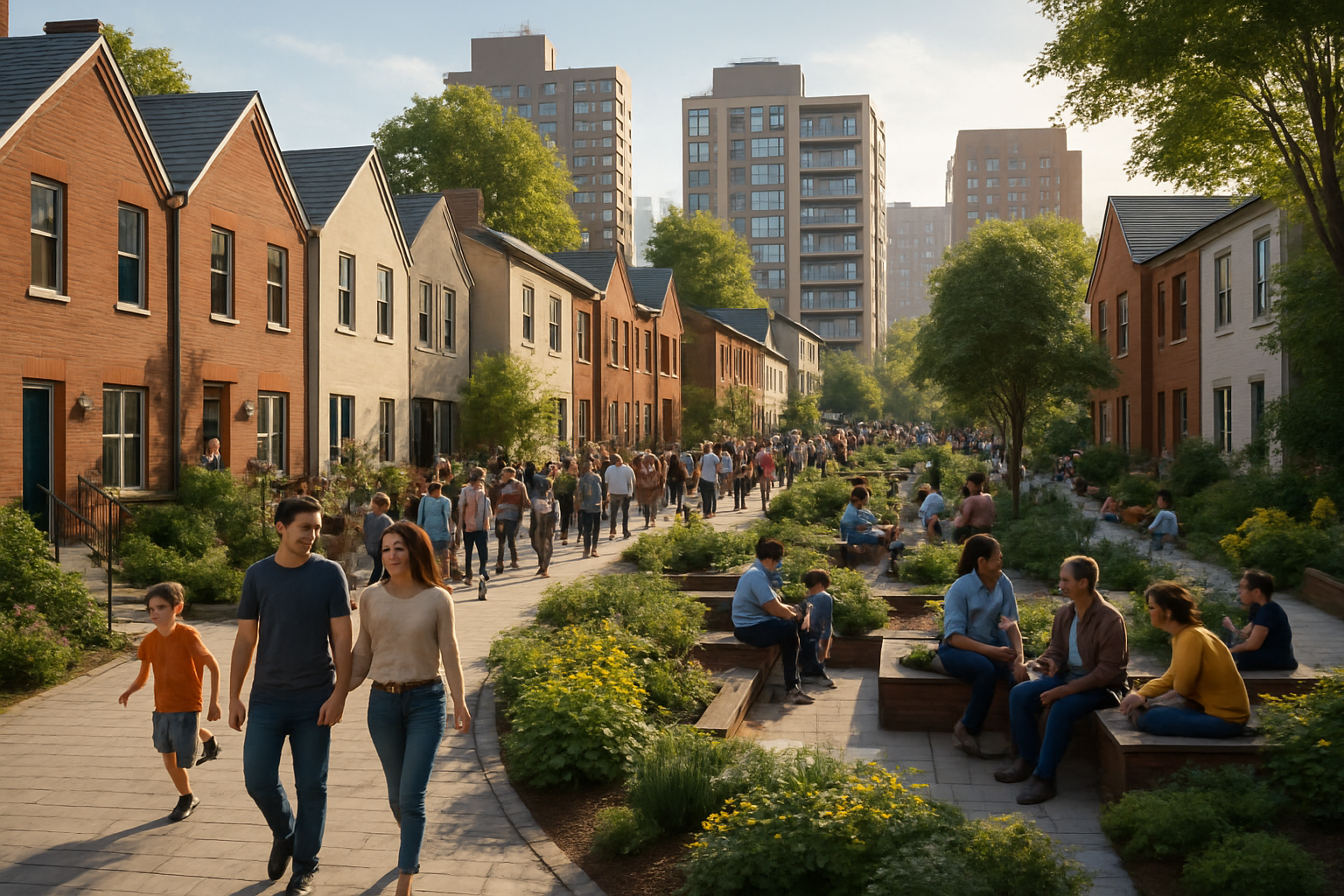Slow Urbanism: Reimagining City Life at a Human Pace
In a world obsessed with speed and efficiency, a countermovement is quietly gaining momentum. Slow Urbanism, a philosophy that champions deliberate, people-centered urban development, is reshaping our understanding of city life. This approach prioritizes human connection, sustainability, and quality of life over rapid expansion and technological advancement. Read below to explore how Slow Urbanism is transforming cityscapes and fostering more livable communities.

The Origins and Philosophy of Slow Urbanism
Slow Urbanism draws inspiration from various sources, including the work of urban theorist Jane Jacobs and the New Urbanism movement. However, it goes beyond these predecessors by explicitly advocating for a deceleration of urban processes. The philosophy contends that by slowing down, cities can create more meaningful spaces, foster stronger communities, and improve overall quality of life for residents.
At its core, Slow Urbanism promotes several key principles:
-
Human-scale development
-
Preservation of local character and history
-
Prioritization of pedestrians and cyclists
-
Integration of nature into urban spaces
-
Emphasis on public gathering places
-
Support for local businesses and economies
These principles guide urban planners, architects, and policymakers in creating cities that are not just efficient, but truly livable and enriching for their inhabitants.
Slow Urbanism in Practice
Across the globe, cities are embracing Slow Urbanism principles to varying degrees. In Copenhagen, Denmark, the transformation of the Nørrebrogade street into a pedestrian and cyclist-friendly corridor exemplifies this approach. The project reduced car traffic, widened sidewalks, and created spaces for community interaction, resulting in a more vibrant and people-centered urban environment.
Similarly, the High Line in New York City demonstrates how Slow Urbanism can repurpose existing infrastructure to create new public spaces. By converting an abandoned elevated railway into a linear park, the project has provided a much-needed green space for residents and visitors alike, while also catalyzing economic development in surrounding neighborhoods.
The Benefits of Slowing Down
Research has shown that Slow Urbanism can yield numerous benefits for cities and their residents. A study published in the Journal of Urban Design found that neighborhoods designed according to Slow Urbanism principles reported higher levels of social cohesion and community satisfaction. Additionally, these areas often see improvements in public health, as increased walkability and access to green spaces encourage physical activity and reduce stress.
Economically, Slow Urbanism can also have positive impacts. By supporting local businesses and fostering a sense of place, this approach can help cities differentiate themselves and attract both residents and tourists. This, in turn, can lead to more stable local economies and increased resilience in the face of global economic fluctuations.
Challenges and Criticisms
Despite its potential benefits, Slow Urbanism faces several challenges in implementation. One major obstacle is the perceived conflict with economic growth and development. Critics argue that slowing down urban processes could hamper progress and make cities less competitive in the global marketplace.
Additionally, there are concerns about equity and gentrification. As Slow Urbanism projects often increase property values in surrounding areas, there is a risk of displacing long-time residents who can no longer afford to live in these improved neighborhoods. Balancing the benefits of Slow Urbanism with the need for affordable housing and inclusive communities remains a significant challenge.
The Future of Slow Urbanism
As cities continue to grapple with issues of sustainability, livability, and resilience, Slow Urbanism is likely to play an increasingly important role in urban planning and development. The COVID-19 pandemic has further highlighted the importance of local communities and access to public spaces, potentially accelerating the adoption of Slow Urbanism principles.
Looking ahead, proponents of Slow Urbanism are exploring ways to integrate this approach with emerging technologies and smart city initiatives. The goal is to create urban environments that are both technologically advanced and deeply human-centered, leveraging innovation to enhance rather than replace human connections and experiences.
A New Paradigm for Urban Living
Slow Urbanism represents a significant shift in how we conceive of and design our cities. By prioritizing human needs, community connections, and sustainability over rapid growth and efficiency, this approach offers a compelling vision for the future of urban life. As more cities experiment with Slow Urbanism principles, we may see a transformation in urban landscapes that not only improves quality of life but also helps address some of the most pressing challenges facing our world today.
As we move forward, the success of Slow Urbanism will depend on continued research, community engagement, and a willingness to reimagine what our cities can be. By embracing a slower, more deliberate approach to urban development, we have the opportunity to create cities that are not just places to live and work, but thriving, sustainable communities that nurture human potential and foster a sense of belonging for all residents.





